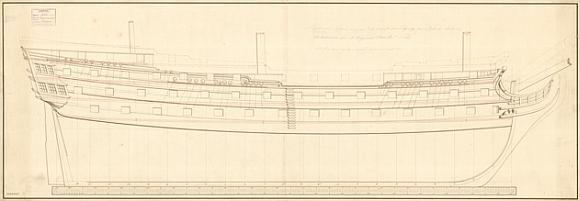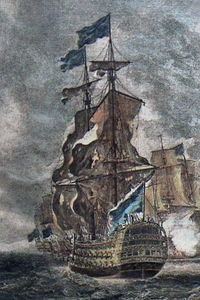Name HMS Namur Launched 3 March 1756 | Ordered 12 July 1750 Fate Broken up, 1833 | |
Notes Participated inSiege of Louisbourg (1758)Battle of Havana (1762)Battle of Cape St Vincent (1797)Battle of LagosAffair of Fielding and Bylandt Class and type 1750 amendments 90-gun second rate ship of the line | ||
HMS Namur was a 90-gun second rate ship of the line of the Royal Navy, built at Chatham Dockyard to the draught specified by the 1745 Establishment as amended in 1750, and launched on 3 March 1756. HMS Namur’s battle honours surpass even those of the more famous HMS Victory.
Contents

History
Namur was the flagship of Edward Boscawen Vice Admiral of the Blue in the capture of Louisburg in 1758. General James Wolfe had sailed across the Atlantic in Namur on this occasion before his capture of Quebec. Also on this journey was 6th Lieutenant Michael Henry Pascal with his slave and servant Olaudah Equiano who at that time was called Gustavus Vasser, his slave name given him by Pascal. Equiano in his book wrote that the ceremony of surrender was "the most beautiful procession on the water I ever saw", and gives fuller details.
Namur was the flagship of Admiral Sir George Pocock in the Battle of Havana (1762).

Namur fought in the Battle of Cape St Vincent (1797) under the command of Captain James Hawkins-Whitshed. Namur was astern of HMS Captain, under the command of then Commodore Horatio Nelson, at the beginning stages of the battle.

Namur was razeed to a 74-gun ship in 1805, and was placed on harbour service in 1807. She remained in this role until 1833, when she was finally broken up.

Some of Namur's timbers were used to support the floor of the wheelwright's workshop at Chatham Dockyard. They were rediscovered there in 1995 and identified in 2003. The restored timbers form the centrepiece of the "Command of the Oceans" gallery at the Chatham Historic Dockyard museum opened in 2016.
